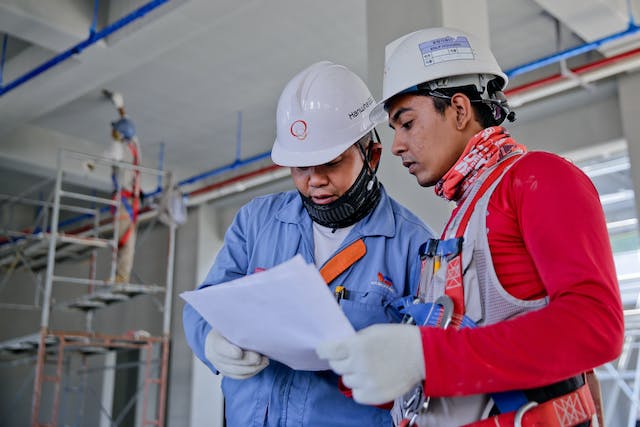
L'industrie est souvent perçue comme le moteur du progrès, toujours à la quête de la dernière innovation. Cependant, une tendance contre-courant commence à émerger : l'utilisation de matériel obsolète. Bien loin d'être une démarche régressive, cette pratique révèle des bénéfices écologiques, économiques, et opérationnels insoupçonnés. Cet article vous embarque dans une exploration des multiples avantages que les cartes électroniques, automates, et variateurs de fréquence d'antan offrent à l'industrie moderne.
1. Un geste pour la planète : l'atout écologique
Dans une ère où la conscience écologique est en pleine ascension, réutiliser du matériel industriel obsolète se présente comme un geste significatif en faveur de l'environnement. Plutôt que d'engendrer des déchets électroniques, réintégrer des équipements déjà existants minimise l'empreinte carbone de l'industrie. En outre, cela réduit la demande en ressources nécessaires à la fabrication de nouveaux dispositifs, contribuant ainsi à la préservation des ressources naturelles.
2. Une économie non négligeable : réduire les coûts sans sacrifier la performance
Le recyclage de matériel obsolète est aussi synonyme d'économies substantielles. L'achat de nouveaux équipements représente un investissement considérable, sans compter les coûts annexes tels que l'installation et la mise en service. En revanche, l'exploitation de dispositifs déjà acquis amortit les dépenses initiales et peut souvent être mise en œuvre avec des ajustements minimes, offrant ainsi une solution rentable sans compromettre l'efficacité opérationnelle.
3. Le maintien des compétences : un avantage pour le personnel
Opter pour du matériel ancien peut également simplifier la gestion des ressources humaines. Le personnel déjà formé sur des équipements spécifiques peut continuer à les utiliser sans nécessiter de formation supplémentaire, ce qui représente un gain de temps et d'argent considérable pour l'entreprise. De plus, cela favorise la rétention des connaissances et des compétences au sein de l'organisation, un atout non négligeable dans un secteur en perpétuelle évolution.
4. Une transition technologique en douceur
Lorsqu'il est finalement temps de moderniser les installations, l'utilisation préalable de matériel obsolète peut faciliter la transition vers de nouvelles technologies. Les équipes sont plus à même de comprendre les évolutions et d'intégrer de nouveaux savoir-faire de manière progressive, réduisant ainsi les risques d'interruption et optimisant la courbe d'apprentissage.
Conclusion
Loin d'être une simple mesure de réduction des coûts, l'emploi de matériel obsolète dans l'industrie représente une stratégie réfléchie offrant des avantages écologiques, économiques, et humains. En considérant le potentiel des équipements du passé, les entreprises peuvent non seulement contribuer à un avenir plus durable, mais aussi optimiser leur fonctionnement interne, tout en préparant le terrain pour les innovations de demain. Ainsi, réhabiliter le matériel industriel obsolète n'est pas seulement une question de nostalgie, mais une approche pragmatique pour avancer vers l'avenir.
Alors, la prochaine fois que vous envisagez de renouveler votre parc de machines, pensez-y à deux fois. Peut-être que ce vieil automate a encore quelques tours dans son sac pour booster votre productivité, tout en protégeant notre belle planète !
1. Un geste pour la planète : l'atout écologique
Dans une ère où la conscience écologique est en pleine ascension, réutiliser du matériel industriel obsolète se présente comme un geste significatif en faveur de l'environnement. Plutôt que d'engendrer des déchets électroniques, réintégrer des équipements déjà existants minimise l'empreinte carbone de l'industrie. En outre, cela réduit la demande en ressources nécessaires à la fabrication de nouveaux dispositifs, contribuant ainsi à la préservation des ressources naturelles.
2. Une économie non négligeable : réduire les coûts sans sacrifier la performance
Le recyclage de matériel obsolète est aussi synonyme d'économies substantielles. L'achat de nouveaux équipements représente un investissement considérable, sans compter les coûts annexes tels que l'installation et la mise en service. En revanche, l'exploitation de dispositifs déjà acquis amortit les dépenses initiales et peut souvent être mise en œuvre avec des ajustements minimes, offrant ainsi une solution rentable sans compromettre l'efficacité opérationnelle.
3. Le maintien des compétences : un avantage pour le personnel
Opter pour du matériel ancien peut également simplifier la gestion des ressources humaines. Le personnel déjà formé sur des équipements spécifiques peut continuer à les utiliser sans nécessiter de formation supplémentaire, ce qui représente un gain de temps et d'argent considérable pour l'entreprise. De plus, cela favorise la rétention des connaissances et des compétences au sein de l'organisation, un atout non négligeable dans un secteur en perpétuelle évolution.
4. Une transition technologique en douceur
Lorsqu'il est finalement temps de moderniser les installations, l'utilisation préalable de matériel obsolète peut faciliter la transition vers de nouvelles technologies. Les équipes sont plus à même de comprendre les évolutions et d'intégrer de nouveaux savoir-faire de manière progressive, réduisant ainsi les risques d'interruption et optimisant la courbe d'apprentissage.
Conclusion
Loin d'être une simple mesure de réduction des coûts, l'emploi de matériel obsolète dans l'industrie représente une stratégie réfléchie offrant des avantages écologiques, économiques, et humains. En considérant le potentiel des équipements du passé, les entreprises peuvent non seulement contribuer à un avenir plus durable, mais aussi optimiser leur fonctionnement interne, tout en préparant le terrain pour les innovations de demain. Ainsi, réhabiliter le matériel industriel obsolète n'est pas seulement une question de nostalgie, mais une approche pragmatique pour avancer vers l'avenir.
Alors, la prochaine fois que vous envisagez de renouveler votre parc de machines, pensez-y à deux fois. Peut-être que ce vieil automate a encore quelques tours dans son sac pour booster votre productivité, tout en protégeant notre belle planète !
